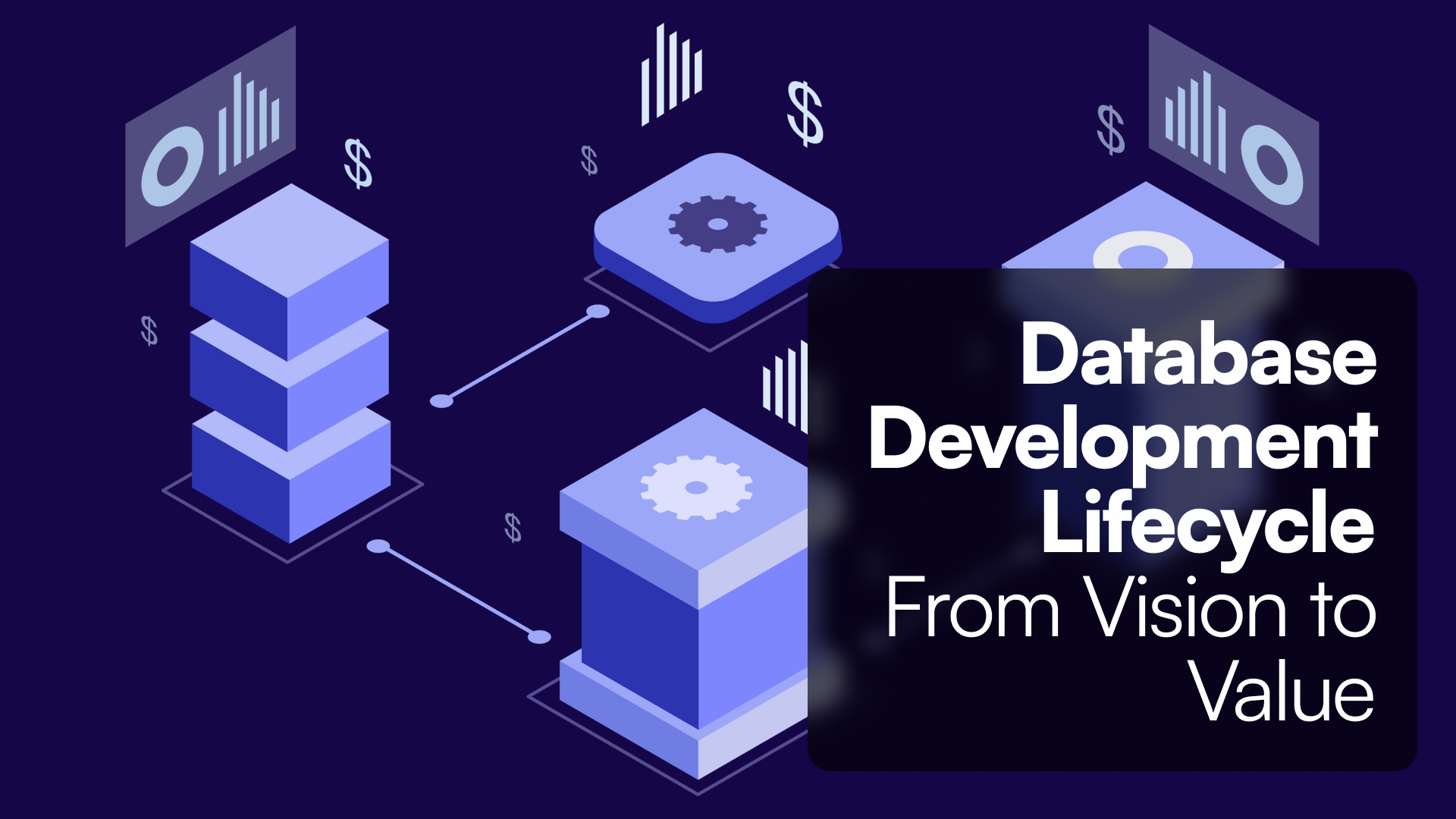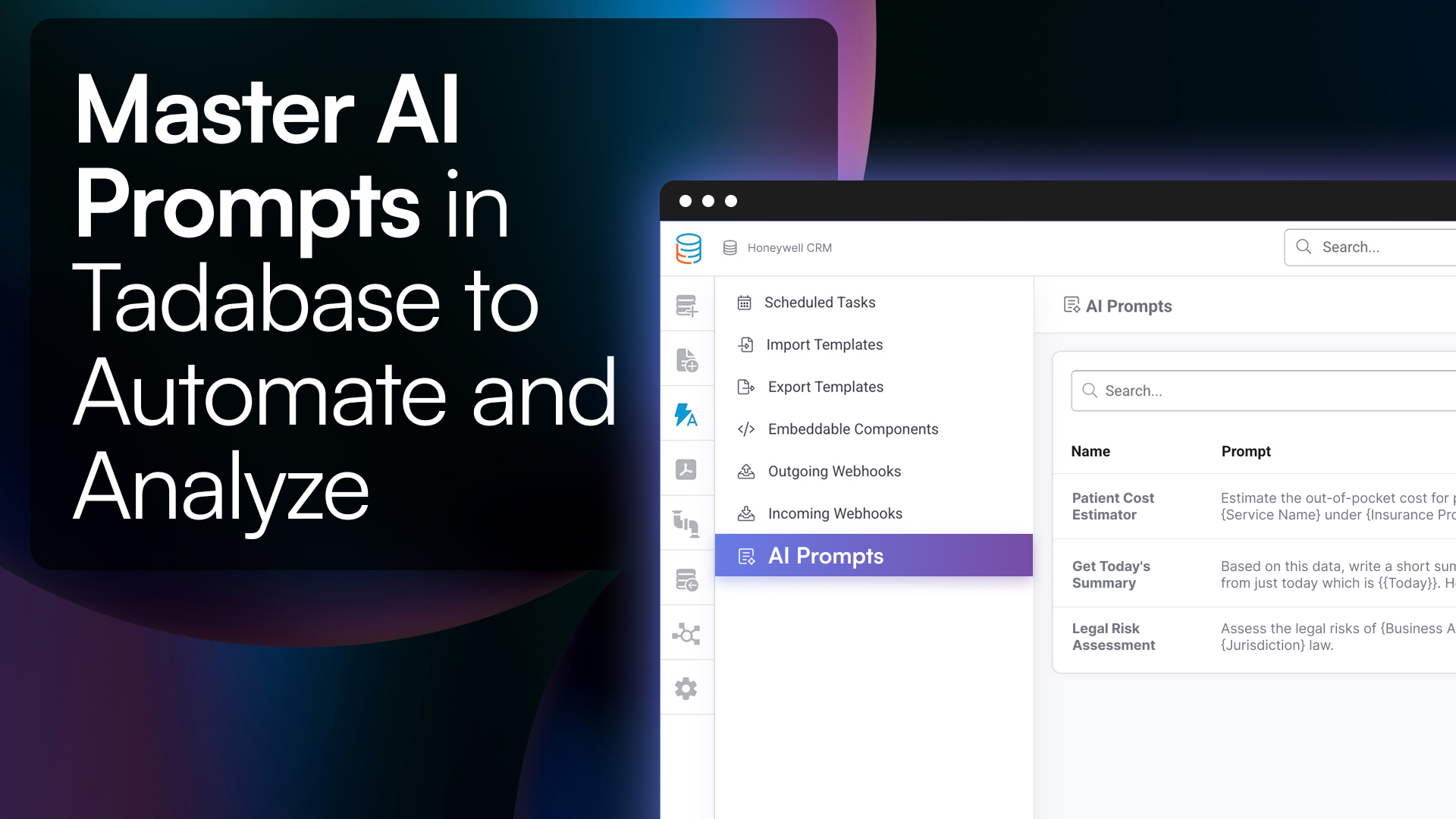Introduction
Creating a web app no longer requires deep technical expertise or coding skills. Whether you're a small business owner, a startup founder, or someone seeking a custom solution, platforms like Tadabase make it easy to turn your vision into reality—all without writing a single line of code.
This guide will walk you through each step of the process, ensuring that you can create your web app from scratch. By the end, you'll have a fully functional, custom-built app ready for launch.
1. Clarify Your App Idea
Before diving into the technical side, solidify your app’s purpose. This foundation will guide every decision you make:
- Identify the Problem: What problem does your app solve?
- Define Your Audience: Who will benefit from your app?
- Determine Key Features: What must your app include to meet its goals?
Pro Tip: Start with a minimum viable product (MVP). This is a basic version of your app with only essential features. Launching an MVP allows you to gather user feedback and iterate on your app's design and functionality.
For more on defining your MVP, check out Lean Startup principles.
2. Prerequisites: What You Need Before You Start
Before you begin building your web app, ensure you have the following:
- A Clear Concept: Know what problem your app solves and who it serves.
- Design Inspiration: Gather ideas and tools like Figma or Sketch to visualize your app.
- Basic Knowledge of Web App Components: Familiarize yourself with terms like databases, user roles, and workflows.
- Time and Patience: Even with no-code tools, thoughtful planning and execution are essential.
Pro Tip: Research similar apps. Look at their strengths and weaknesses, and use that information to improve your app.
3. Choose a No-Code Platform
Choosing the right platform is crucial. Tadabase offers advanced features and user-friendly tools, making it ideal for web app creation:
- Database Management: Easily organize and manage your data.
- User Management: Handle user roles and permissions.
- Automation: Automate workflows to save time.
- Scalability: Tadabase scales with your needs, so your app can grow seamlessly.
For a deeper dive, explore the Tadabase platform features.
4. Plan Your App’s Workflow
Mapping out your app’s workflow helps prevent missing any critical steps:
- User Journey: How do users sign up, log in, and interact with your app?
- Essential Pages: What key pages are needed, and how should they link together?
- Forms and Interactions: What forms will users need to fill out, and how will these interactions drive the app's functionality?
Pro Tip: Sketch out the workflow and test it by walking through the user experience. This helps catch any usability issues early.

For workflow design tools, consider Lucidchart or Miro.
5. Design Your Database
Your database is the core of your app. Here’s how to structure it:
- Identify Data Types: Define the main entities your app will handle (e.g., users, products, orders).
- Create Tables: Set up tables to store your data (e.g., a “Users” table for profiles).
- Establish Relationships: Link related tables, such as users and their orders.
Learn more about data modeling from Tadabase's documentation.
6. Design the Front-End
Now it’s time to design the front-end—the part of the app users interact with:
- Add Components: Use Tadabase’s drag-and-drop builder to create forms, tables, and dashboards.
- Customize Layouts: Arrange components for a user-friendly experience.
- Branding: Customize colors, fonts, and logos to match your brand.

For inspiration, explore popular design systems like Material Design or Bootstrap.
7. Implement User Roles and Permissions
If your app requires different access levels, Tadabase makes it easy to manage users:
- Create Roles: Define roles like Admin, Manager, and Customer.
- Assign Permissions: Control what each role can access or modify.

For more on user management, refer to Tadabase’s user roles documentation.
8. Automate Processes
Automation saves time and reduces errors. Here’s how Tadabase can help:
- Trigger Actions: Automatically send emails, update records, or create tasks based on specific conditions.
- Schedule Tasks: Automate recurring tasks, like generating reports.
Example: Automate sending confirmation emails after a new order is placed.

Explore more automation possibilities with Tadabase integrations.
9. Test and Gather Feedback
Before launching, thoroughly test your app:
- User Testing: Have a group of users try out your app and provide feedback.
- Bug Fixing: Address any issues that arise during testing to ensure a smooth launch.
Pro Tip: Launch with a beta version first. This allows you to gather real-world feedback and make improvements before a full-scale release.
10. Launch and Monitor
Once you’re confident your app is ready, it’s time to go live:
- Hosting: Ensure your hosting is set up correctly (Tadabase takes care of this).
- Monitoring: Use analytics tools to monitor performance and user engagement.

Consider using Google Analytics or Mixpanel for tracking user engagement and performance metrics.
11. Iterate and Improve
Your app’s journey doesn’t end at launch:
- Collect Feedback: Regularly gather user feedback to identify areas for improvement.
- Add Features: Prioritize and implement new features based on feedback.
- Optimize Performance: Continuously monitor and improve app performance.
Pro Tip: Regular updates based on user feedback keep your app relevant and improve user satisfaction.
For ongoing optimization, explore A/B testing with Google Optimize.
Frequently Asked Questions
1. Where do I start with building a web app? I'm a complete beginner.
Start by defining your app’s purpose. Identify the problem you want to solve, your target audience, and the key features you need. From there, choose a no-code platform like Tadabase, which will guide you through the rest of the process.
2. Can I create a web app for free?
Yes, you can start building a web app for free using platforms like Tadabase, which offers a free trial. However, to unlock more advanced features and scale your app, you may need to move to a paid plan. For more details, visit Tadabase’s pricing page.
3. How do I create a web application form?
Creating a form is simple with Tadabase’s drag-and-drop interface. Add a form component, customize the fields, and link it to your database. Forms can handle tasks like collecting user information, processing orders, or generating reports. Learn more in Tadabase’s form creation guide.
4. What's the difference between a website and a web application?
A website typically provides static content, like articles or company information. A web application, on the other hand, is interactive and allows users to perform tasks, such as submitting forms, managing accounts, or making purchases. For more information on the differences, refer to this article on websites vs. web apps.
Conclusion
Building a web app is no longer a daunting task, thanks to no-code platforms like Tadabase. By following this comprehensive guide, you can create a robust, scalable app tailored to your needs—without any coding. Whether you’re just starting or fine-tuning your app, this guide provides the tools and insights you need to succeed.
Ready to build your own web app? Start with Tadabase today and bring your vision to life.








